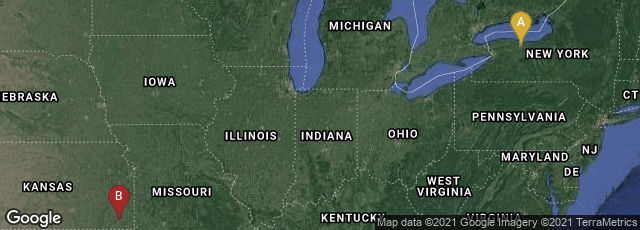
A: Rochester, New York, United States, B: Parsons, Kansas, United States
Kodachrome, the first color transparency film, was invented by musicians Leopold Godowsky, Jr. and Leopold Mannes. The project began even before the two young men graduated from high school. After viewing the 1917 film Our Navy in the early two-color additive color system, Prizma Color, Mannes and his friend Godowsky began experimenting with the use of colored filters and film, patenting a new process even before their high school graduation. They continued their experimentation and research while Mannes was studying physics and piano at Harvard and Godowsky was studying violin at UCLA. Eventually, with backing from an investor, the pair was able to convince Kodak of the value of their discoveries. In 1930, they moved to Kodak's Rochester headquarters, and within three years they developed the technique of three-color emulsion on which Kodachrome was based.
Kodachrome 16mm movie film was released for sale in 1935, and in 1936 Kodachrome 35mm still and 8mm movie film were released. To some Kodachrome was the best slide and movie film ever produced. Kodak produced the film and the chemicals required to develop Kodachrome from 1935 to 2009, by which time digital photography had, for the most part, replaced film photography.
According to the The New York Times, the last remaining roll of Kodachrome was developed on at Dwayne's Photo in Parsons, Kansas on December 30, 2010.
(This entry was last revised on 07-10-2014.)